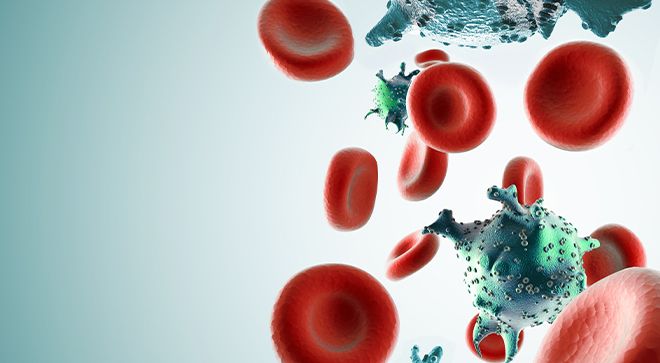News
Article
Iopofosine I 131 Is Promising Across Waldenstrom’s Macroglobulinemia Types
Eighty percent of patients with relapsed or refractory Waldenstrom’s macroglobulinemia responded to treatment with iopofosine I 131, researchers found.
In a trial, 80% of patients with Waldenstrom’s macroglobulinemia showed responses to treatment after receiving the novel iopofosine I 131.

A novel drug, iopofosine I 131, led to positive results in pretreated, relapsed or refractory Waldenstrom’s macroglobulinemia (a rare subtype of non-Hodgkin's lymphoma that starts in the bone marrow), according to findings from the CLOVER WaM trial.
Iopofosine I 131 works by delivering iodine-131 (a cancer-killing radiopharmaceutical used to treat thyroid cancer) directly to cancer cells. Waldenstrom's macroglobulinemia is typically treated with chemotherapy, immunotherapy, radiation or bone marrow transplant, according to the American Cancer Society.
Patients enrolled in the trial all received at least two prior lines of treatment for Waldenstrom’s macroglobulinemia, including a Bruton tyrosine kinase (BTK) inhibitor.
Iopofosine I 131 Leads to Responses Across Disease Subtypes
Trial results, which were announced by the drug’s manufacturer Cellectar Biosciences, showed that 80% of patients responded to the therapy — including 56.4% who achieved a major response, which is when blood tests show a very little amount of Waldenstrom’s macroglobulinemia cells. This exceeded the researcher’s goal of a 20% major response, indicating that the trial met its primary goal.
Of note, response rates were similar among disease subgroups:
- MYD88-wt disease, meaning those with certain mutations associated with poorer outcomes (81% response rate)
- P53-mutated disease (80% response rate)
- Patients who received BTK inhibition therapy (72% response rate)
- Those whose disease progressed on two and three different classes of therapies (22 patients; 59% response rate and 15 patients; 53% response rate)
“Treatment options for relapsed or refractory WM patients are limited with a critical need for new therapies with novel mechanisms of action. Currently, only about 10% of patients receiving salvage therapy respond to that treatment and experience limited durability of less than six months in later lines of therapy,” Dr. Sikander Ailawadhi, professor of medicine at Mayo Clinic, and lead investigator in the CLOVER WaM study, said in a news release about the findings.
Disease Control Rate and Duration of Response
The secondary goal of the trial was disease control rate (percentage of study participants whose cancer shrunk, disappeared or stopped growing) and duration of response (time patients live on treatment before the therapy stops working and the cancer gets worse). Trial data from CLOVER WaM showed that the disease control rate was 98%. This is a slight decrease from the 100% disease control rate publicized earlier this year.
READ MORE: Novel Drug Shows 100% Disease Control Rate in WM
The median duration of response was not reached at the time study data was collected. This means that most patients were still responding to therapy, so the researchers could not calculate the average time until their response stopped.
At 18 months after treatment with iopofosine I 131, 78% of patients who achieved a major response were living without disease progression. In the overall population who achieved a response (meaning that their cancer shrunk from therapy), 72% were without disease progression at the 18-month mark.
“The 98% disease control rate and 80% ORR achieved in this pivotal study utilizing just four doses of iopofosine monotherapy in multi-class refractory patients are very compelling, demonstrating impressive deep and durable responses with a high proportion of patients remaining treatment-free,” Ailawadhi said in the release.
Side Effects for Patients With Waldenstrom’s Macroglobulinemia
Findings from the study also showed that iopofosine I 131 tended to be well-tolerated. Unlike other cancer therapies, according to the release, it did not cause heart, kidney or liver side effects, nor did it cause peripheral neuropathy or significant bleeding.
The most commonly reported side effects were mostly blood-related. They were thrombocytopenia (low platelets) neutropenia (decrease in a type of white blood cells) and anemia (decrease in healthy red blood cells).
According to the CLOVER WaM’s listing on clinicaltrials.gov, researchers plan on completing the study in June 2025. Of note, the trial also has additional groups of individuals with other blood cancers.
“The outcomes observed in this study continue to far exceed expectations and provide evidence of the potential for iopofosine in a broad range of WM patients, including difficult-to-treat subgroups. We believe with these results that iopofosine I 131 has the potential to become the standard-of-care therapy for relapsed/refractory patients,” said James Caruso, president and CEO of Cellectar, in the release.
For more news on cancer updates, research and education, don’t forget to subscribe to CURE®’s newsletters here.





